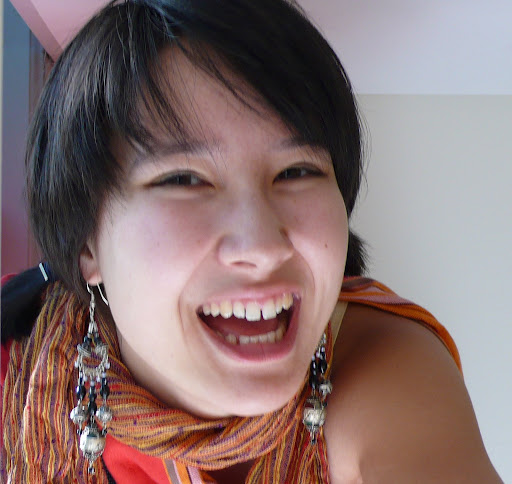Description of a Day
We're up at the center at night right now, as I write this (though it will likely be day again by the time I post it.) It's been another long day - we woke at 6:30 as usual, washed and dressed and had breakfast. The Kenyan staff who maintain the campsite for us live in a little village just to the east of the food tent, and they bring us hot water in the morning so that we can wash our faces, etc. I am often woken by the splash of steaming water into my washbasin, if the sunrise hasn't already stirred me. The tents face south-ish, so the light doesn't stream right into them, but the sky lightens and the birds start calling... For the first few days, all of the animal noises would wake me periodically throughout the night, and the strange bird calls would wake me in the morning, but I'm acclimatizing quickly and I slept straight through the night last night.
Anyhow, we woke at 6:30. Breakfast at 7:00 - it's usually delicious fresh mango and pineapple, toast, eggs, and sometimes sausages. There are always green oranges, passionfruit, various cereals, biscuits (by which I mean plain cookies, not biscuits&gravy), the ubiquitous tea, peanut butter, honey, butter, marmite (!), jam, and some long-life milk. The staff cook everything in the village and then bring it to our food tent. Today we left promptly at 7:30 and went for a long game drive to the northern end of the Mpala ranch, up into more arid country that looked much like the American Southwest. The acacia savanna blended into rockier, barer ground with many different cacti - some of them flowering with bright red succulent flowers. Slightly confusing because I thought cacti flowered after a rain? About 20% of them were flowering, I would estimate, so perhaps the percentage goes up when it rains.
We saw warthogs, which are bristly and ugly, with huge noses and tusks. They dashed around on the dusty ground with their short legs, chasing impala back and forth and rooting around with their snouts. The warthogs kick up big cloud of dust when they run, cornering with their stubby legs, whereas the impala bound effortlessly along the dry earth, thin legs and slender hooves barely disturbing the dust. Sometimes we can see a herd of impala in the mornings across the river, frolicking in the grass. The young impala run in circles or back and forth, back and forth, leaping and kicking up their heels like a bucking horse. Nathan - the grad student who is here with us from Princeton and is living down in the campsite with us - tells us that it means they're happy.
After the game drive, we went back to the center, grabbed some tea/water, and had a short lecture by Nathan on his dissertation work. A different grad student, some years ago, did large-scale burn experiments: the savanna burns naturally, and he wanted to investigate the ecological differences between areas that had been burned, and areas that had not. So he actually burned enormous swathes of land - 180 hectares was the largest patch, I think - but he did many, many patches, some large, some small. I would've loved to have seen it - enormous fires scorching through the dry grasses, smoke rising everywhere. (Moral of the story: Ecology Is Fun!) Nathan helped with the burns, and is studying the differences in birds inside and outside the burn areas. That's the way a lot of the experiments work here - someone will do a large-scale experiment and many other scientists will take advantage of it to examine their own area of interest within the context of that experiment (in this case, Nathan's interest is in birds). Prof. Truman Young from UC Davis has been doing large-scale herbivore exclusion experiments for at least a decade, and there have been zillions of spinoff studies. He sets up giant fenced-in areas that keep out different combinations of herbivores, from ALL herbivores to only elephants and giraffes.
After Nathan's lecture, we had our normal lecture from Nick Georgiadis, then lunch, which is at the center with the rest of the people staying here. Then we went out to do field work in the afternoon: measuring different things inside and outside of an exclosure. We've been measuring dung, grass, trees, and insects, and have measured inside and outside of an old boma site, a burn site, and now an exclosure. It is immensely rewarding to learn about these things in the morning and then actually DO them - in AFRICA - in the afternoons. I can now tell the difference between at least 7 different kinds of dung, and have picked up, examined, broken open, smelled, juggled, and drawn many more dungpiles than your average college student. (Hurrah!)
After field work, back the campsite. I painted a picture of the river (still figuring out how to see things here; it's so different from any other landscape I've ever painted! I have to learn how to look at the colors, the shapes, the quickly-shifting light. More than ever, the landscape seems like a canvas that the sun can paint upon at will.) We had dinner, which is by the light of kerosene lanterns, and then went back up the center for awhile to enter data, write emails, etc..
And that is A Day In The Life Of, etc.



0 Comments:
Post a Comment
Subscribe to Post Comments [Atom]
<< Home